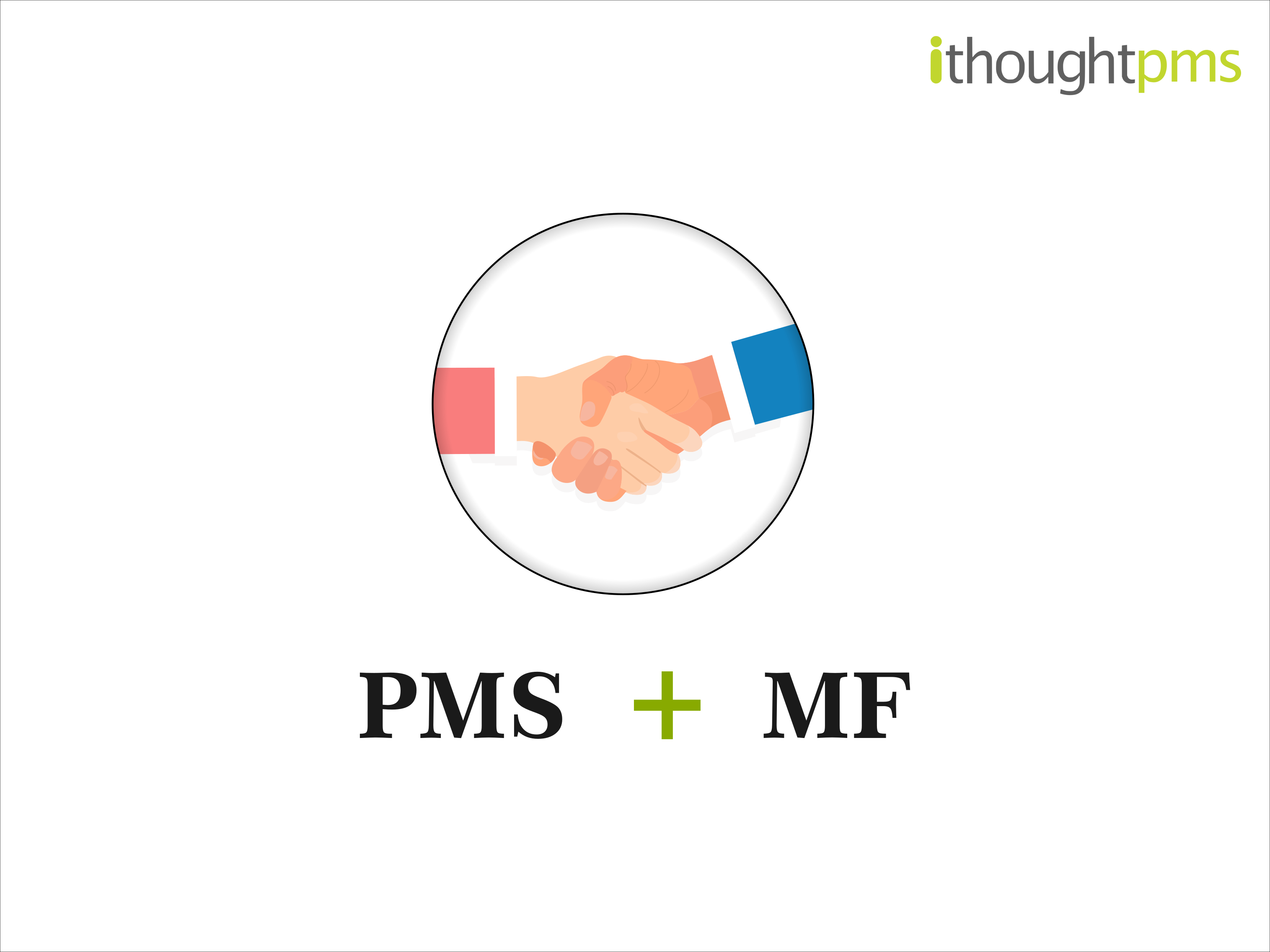
Looking for PMS vs MF?
When it comes to equity investing, investors often question the difference between mutual funds and portfolio management services. There is a host of written material online that compares and contrasts the two and guides investors to decide which one would be the right fit.
We believe that PMS and Mutual Funds are two sides of the same coin. Our clients enjoy the best of both worlds. In this piece, we debunk the common myth that an investor needs to choose one over the other.
The point of contention
The PMS + MF model works wonders. A PMS investor can invest in mutual funds, but every mutual fund investor cannot be a PMS investor. The minimum entry barrier of Rs. 50,00,000 prohibits some mutual fund investors from opting for portfolio management services. However, PMS investors avoid this route due to various misconceptions. Here are a few:
“My PMS already invests in equities I don’t need funds”
A common assumption is that mutual funds only provide equity exposure. A PMS investor not wishing to duplicate or increase his equity exposure can use mutual funds to allocate to gold, debt, global equities. This ensures asset allocation and develops a strong portfolio.
“PMS gives higher returns than MF”
SEBI regulations on investment universe and allocation for Mutual funds are tighter compared to PMS. Naturally, portfolio management services enjoy greater flexibility in investment decisions. The general belief is that PMS strategies outperform mutual funds in terms of returns. This would also mean that market downturns can hit a PMS harder as well. Having a stable asset allocation with adequate mutual fund exposure can provide stable long-term returns.
“Mutual funds are only for retail investors”
The low-ticket size requirement for mutual funds gives the illusion that it is a tool primarily for retail investors. There are several large-sized institutions and high net worth individuals who also invest in mutual funds. Just look at the institutional holding in some large mutual funds and you will know!
Why choose one when you can have both?
How do PMS and Mutual Funds complement each other?
Having addressed the common concerns, let us talk about how PMS and Mutual Funds complement each other.
Sectoral bets
There are very few sector-specific PMS in the industry. Sector investments are usually higher in risk. Making a large ticket bet in a sectoral PMS may not be everyone’s cup of tea. It can heavily skew sectoral concentration in a mid-sized portfolio. A mutual fund enables an investor to make smaller concentrated bets in sector funds that will suit their risk appetite more appropriately.
Asset allocation
The recent years in the market have highlighted the importance of asset allocation like no other. While equity markets have remained volatile, gold has significantly rallied and cushioned portfolios. In the ithought RIA model, we advised clients to add gold funds from 2018. These portfolios have reaped the benefits during periods of market volatility, like the crash of March 2020. Most PMS in the country are equity-only PMS. Mutual funds provide an avenue for a PMS investor to have exposure in various asset classes like gold, debt and even global equities.
Passive investing
PMS in India primarily focus on active investing. Index funds are useful for those seeking a low-cost passive approach. Mutual Funds offer a wider range of passive investing choices.
At ithought, we have been providing both mutual fund advisory and portfolio management services to investors. We see the virtue in building Mutual Fund and PMS investments alongside each other. Find out how we do this as our chief ideator and fund manager, Mr Shyam Sekhar explains the PMS+MF model in our next webinar –


